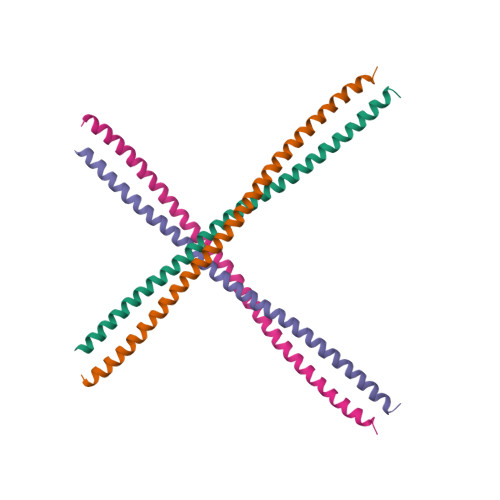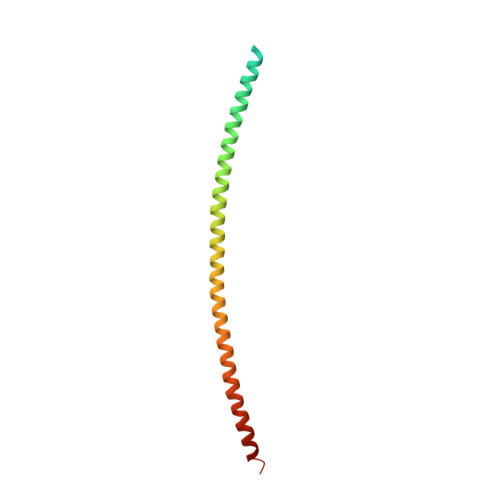Structural basis for heteromeric assembly and perinuclear organization of keratin filaments.
Lee, C.H., Kim, M.S., Chung, B.M., Leahy, D.J., Coulombe, P.A.(2012) Nat Struct Mol Biol 19: 707-715
- PubMed: 22705788
- DOI: https://doi.org/10.1038/nsmb.2330
- Primary Citation of Related Structures:
3TNU - PubMed Abstract:
There is as yet no high-resolution data regarding the structure and organization of keratin intermediate filaments, which are obligate heteropolymers providing vital mechanical support in epithelia. We report the crystal structure of interacting 2B regions from the central coiled-coil domains of keratins 5 and 14 (K5 and K14), expressed in progenitor keratinocytes of epidermis. The interface of the K5-K14 coiled-coil heterodimer has asymmetric salt bridges, hydrogen bonds and hydrophobic contacts, and its surface exhibits a notable charge polarization. A trans-dimer homotypic disulfide bond involving Cys367 in K14's stutter region occurs in the crystal and in skin keratinocytes, where it is concentrated in a keratin filament cage enveloping the nucleus. We show that K14-Cys367 impacts nuclear shape in cultured keratinocytes and that mouse epidermal keratinocytes lacking K14 show aberrations in nuclear structure, highlighting a new function for keratin filaments.
Organizational Affiliation:
Department of Biochemistry and Molecular Biology, Bloomberg School of Public Health, Johns Hopkins University, Baltimore, Maryland, USA.




















